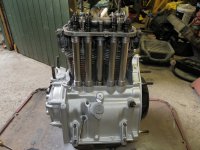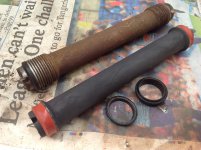lazylobster
Established member
So, near on 300 mile usage of Valentina this weekend gone. A lot was done at speed (70mph whoop whoop) on the M25, M40 and M4. She seems to be fine at speed. Quite impressed with 2 up and a small amount of luggage.
However, she is throwing a bit of oil about in the ol engine bay. Seems to be some over the cooling flap, out to the dist. heat shield and coil area.Some around the carb on top of the engine. :bang:
Not oil dipstick as I replaced this few weeks ago with new item.
I think the top of the engine is that some of pipe work is loose, suction and oil breather. The biggest concern is around the right hand side of the bay.
Reading the forum, it seems gasket /rocker cover or push rod tubes. Someone mentioned spring loaded tubes?
Can some kind soul educate me please?
Thanks
Rob
However, she is throwing a bit of oil about in the ol engine bay. Seems to be some over the cooling flap, out to the dist. heat shield and coil area.Some around the carb on top of the engine. :bang:
Not oil dipstick as I replaced this few weeks ago with new item.
I think the top of the engine is that some of pipe work is loose, suction and oil breather. The biggest concern is around the right hand side of the bay.
Reading the forum, it seems gasket /rocker cover or push rod tubes. Someone mentioned spring loaded tubes?
Can some kind soul educate me please?
Thanks
Rob



